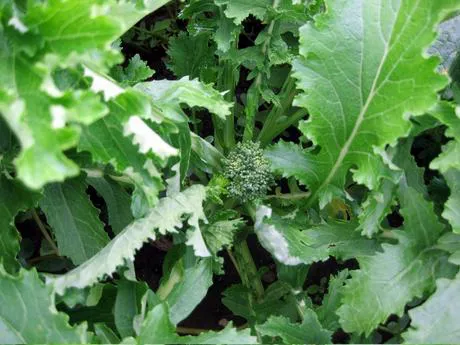In the last years, the increasing interest for Brassica vegetables, being functional and nutritious food, has favored the consumption of cabbage, broccoli, and cauliflower. Currently, the broccoli raab production is addressed to both the fresh produce and fresh-cut produce market.

As for all ready-to-use vegetables, fresh-cut broccoli raab is more perishable than the other products. The main quality decay symptoms are the head yellowing, turgor loss, tissue flaccidity and smell. As for all fresh-cut produce, the high quality of the final product can be assured by selecting the proper maturity stage for the processing, controlling defects and disorders, and maintaining suitable temperature, atmosphere, and relative humidity.
At the moment, the most used technologies to extend the fresh-cut produce shelf-life are the refrigeration, systems to remove the ethylene or to inhibit its action, the modification of surrounding atmosphere, and UV-C radiations.
The researchers (Cefola et al., 2010) of the University of Foggia (Italy) have conducted studies on fresh-cut broccoli raab. They evaluated the efficacy of 1-Methylcyclopropene (1-MCP) on shelf-life and the effect of controlled atmosphere (CA) on the quality of final product.
For the experiment on 1-MCP, the fresh-cut broccoli raab untreated (=control) and treated with 1 µl L-1 of 1-MCP for 24 h at 20 °C were stored at 5°C for 14 days in jars connected to a continuous flow of humidified air or to a continuous flow of air enriched with 100 µl L-1 of ethylene. For the experiment on controlled atmosphere, four atmosphere compositions were tested. The fresh-cut samples were stored at 5°C for 17 days in jars connected to a continuous humidified flow of air (= control), of 3% O2 in nitrogen (Low oxygen), of 10% CO2 in air (High carbon dioxide), and of 3% O2 + 10% CO2 in nitrogen (mix).
In both cases, the shelf-life and the quality were evaluated by measuring the antioxidant capacity, chlorophyll content, Vit. C content, respiration rate, weight loss, colour, overall appearance, odour, ethylene production, ammonia production.
The experiment on 1-MCP showed that the exposure of fresh-cut broccoli raab to exogenus ethylene during storage induced an increase of respiration and ammonia accumulation, accelerating the loss of chlorophyll, yellowing, and flowering; however, all these quality decay symptoms can be inhibited treating fresh-cut broccoli raab with 1-MCP for 24 h.
The experiment on controlled atmosphere showed that the cold storage in 3% oxygen in nitrogen could preserve qualitative attributes and extend the shelf-life up to 17 days, delaying the respiration rate, head yellowing, chlorophyll and vit. C loss. Analyses results showed that the off-odours were only detected in samples stored in high carbon dioxide and in air, confirming the results reported by several authors who found that under certain levels of O2 (<0.5%) and/or over levels of CO2 (>10%) the shelf-life of fresh-cut produce is seriously compromised.
The authors demonstrated that fresh-cut broccoli can be stored at 5°C up to 17 days using 1-MCP and a controlled atmosphere at low oxygen concentration.
Original works:
1) Cefola M., Amodio M.L., Cornacchia R., Rinaldi R., Vanadia S., Colelli G., ‘Effect of atmosphere composition on the quality of ready-to-use broccoli raab (Brassica rapa L.)’, 2010, J. Sci. Food Agric., Issue No. 90 (5), pagg. 789-797. http://www.ncbi.nlm.nih.gov/pubmed/20355114
2) Cefola M., Amodio M.L., Rinaldi R., Vanadia S., Colelli G., ‘Exposure to 1-methylcyclopropene (1-MCP) delays the effects of ethylene on fresh-cut broccoli raab (Brassica rapa L.)’, 2010, Postharvest Biology and Technology, Issue No. 58 (1), pagg. 29-35. http://www.deepdyve.com/lp/elsevier/exposure-to-1-methylcyclopropene-1-mcp-delays-the-effects-of-ethylene-czr0UZsjiM
